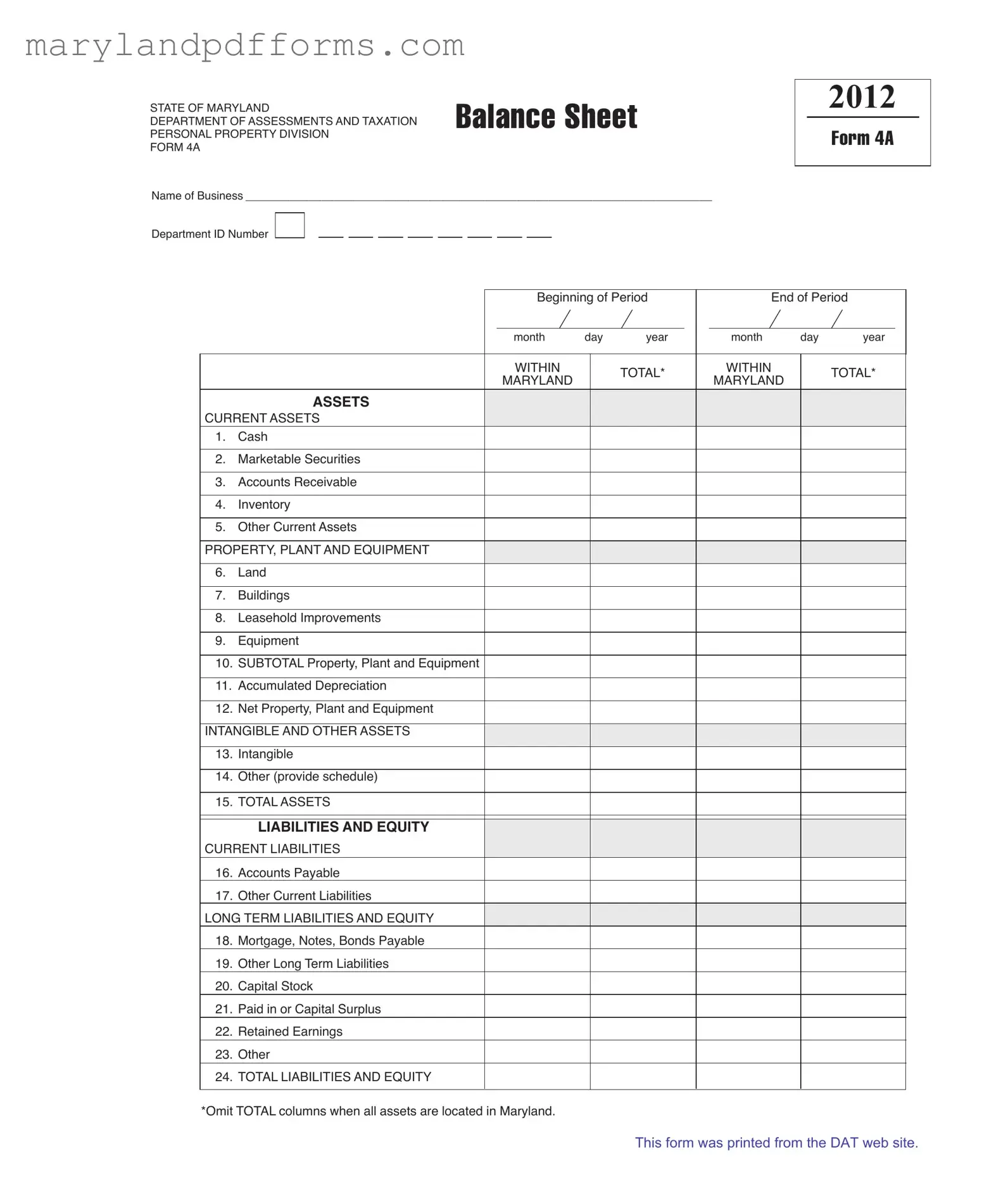The Maryland 4A form is a balance sheet used by businesses to report their financial position to the Department of Assessments and Taxation. It includes detailed information about a business's assets, liabilities, and equity as of a specific date.
Any business entity operating in Maryland that has personal property must file the Maryland 4A form. This includes corporations, partnerships, and sole proprietorships that own or lease personal property in the state.
The form requires information about:
-
Current Assets, such as cash, accounts receivable, and inventory.
-
Property, Plant, and Equipment, including land, buildings, and equipment.
-
Intangible and Other Assets.
-
Current Liabilities, such as accounts payable.
-
Long-term Liabilities and Equity, including capital stock and retained earnings.
The Maryland 4A form is typically due on April 15th of each year. However, businesses should verify any specific deadlines or extensions that may apply to their situation.
Failing to file the Maryland 4A form can result in penalties and interest on any unpaid taxes. Additionally, the business may face difficulties in maintaining good standing with the state.
Yes, businesses can file the Maryland 4A form online through the Maryland Department of Assessments and Taxation's website. This option may streamline the process and ensure timely submission.
The TOTAL columns on the Maryland 4A form summarize the total assets and liabilities of the business. However, if all assets are located within Maryland, businesses can omit these columns.
How do I determine the value of my assets?
To determine the value of assets, businesses should assess the fair market value of each item. This may involve reviewing purchase prices, current market conditions, and depreciation schedules for property and equipment.
Additional resources, including instructions and guidelines for completing the Maryland 4A form, can be found on the Maryland Department of Assessments and Taxation's website. For personalized assistance, consider reaching out to a tax professional or legal advisor.
